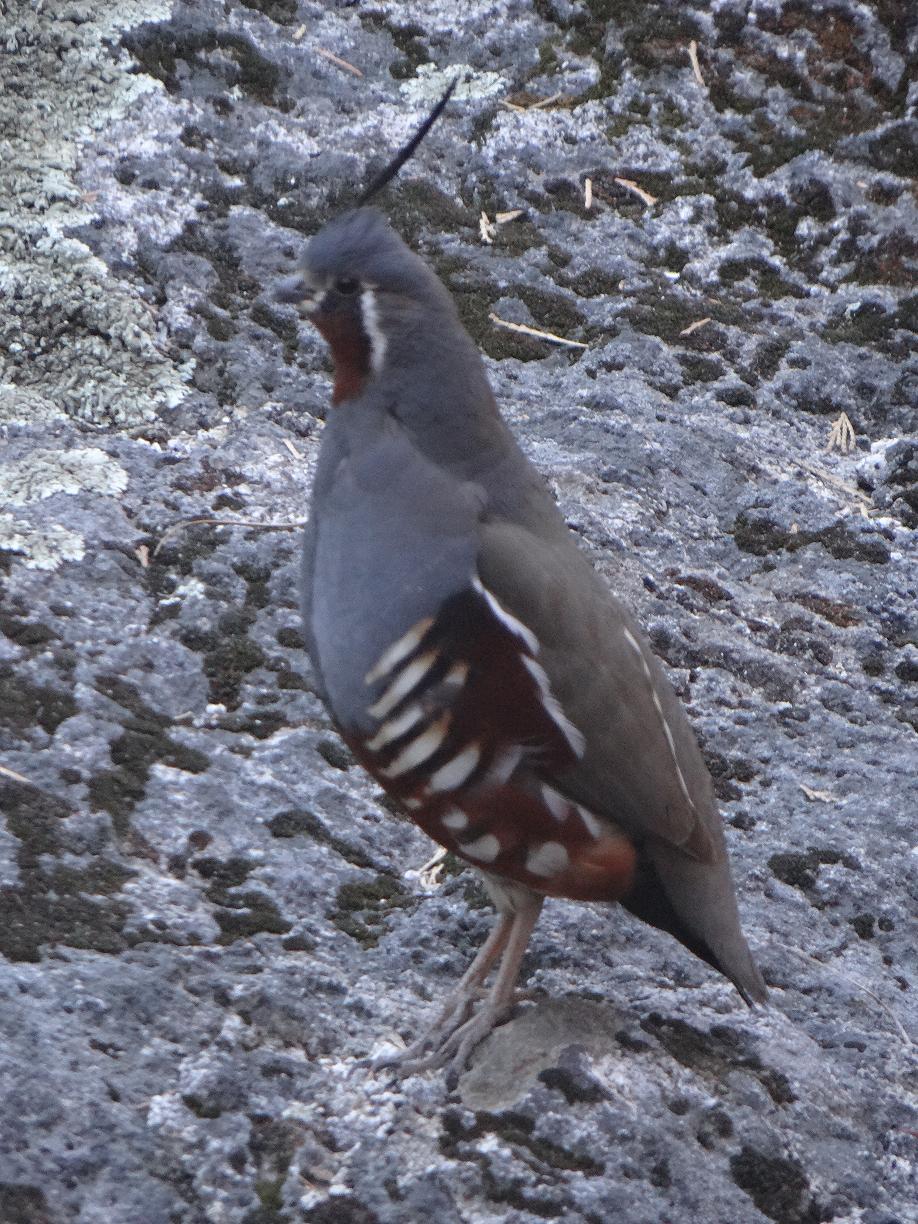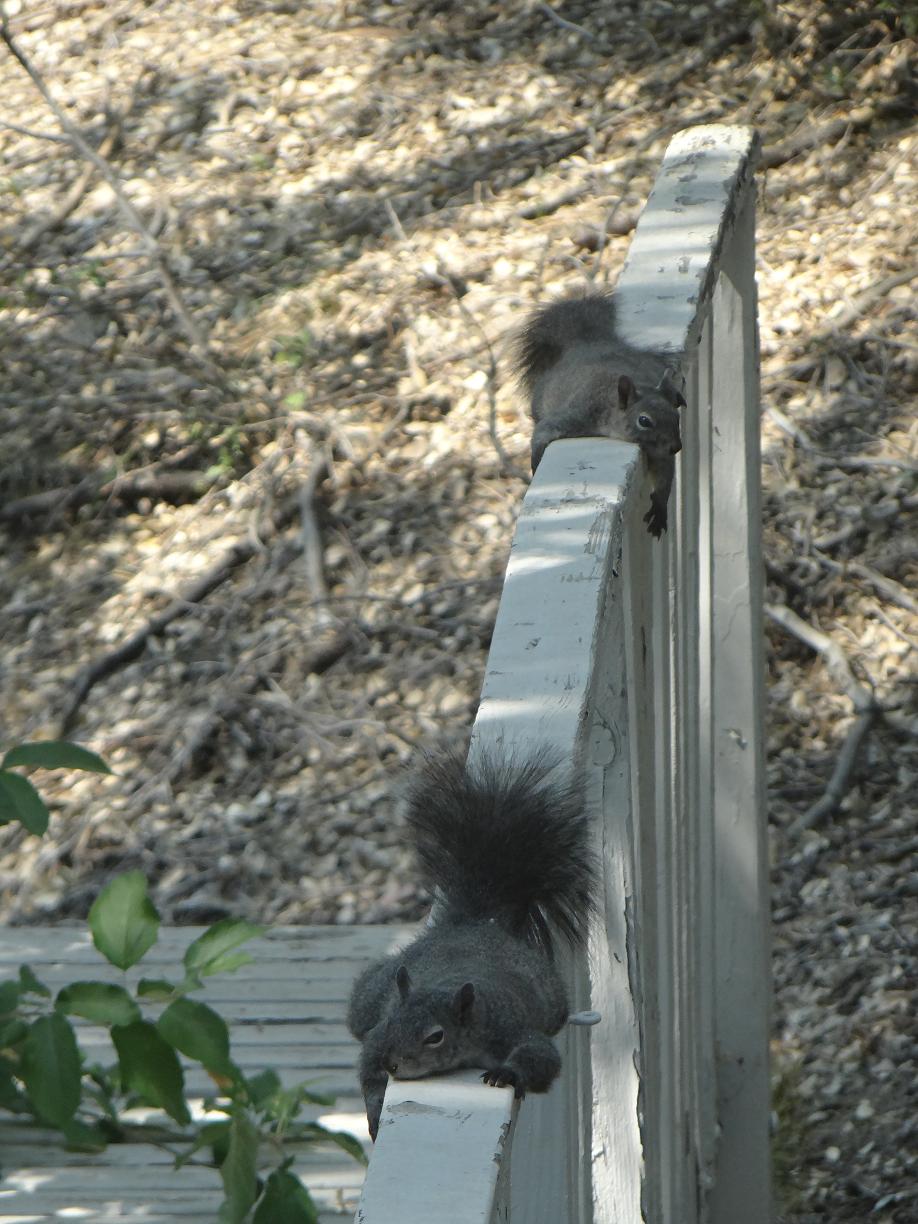The weekend is predicted to bring a near record heat wave to Southern California. The Coachella Valley which includes Palm Desert may reach 122 degrees. Death Valley is predicted to reach 129 degrees which is only 5 degrees less that the highest recorded temperature on Earth . On July 10, 1913, Death Valley reached 134 degrees. Fortunately, Idyllwild will not get that hot.
The heat effects us all in different ways. The Mountain Quail breed less during seasons of high temperatures and low rainfall. I have seen a covey of 7 adults in our yard but no chicks. Yesterday, I saw a family - 2 adults and 6 chicks. The adults were on high alert one in the front and the other in the back watching for danger. When one of the adults made a special call, the chicks stopped foraging and quickly gathered together with the adults.
Two deer came nearby as well . They seem to like the Manzanita shrubs that grow up here.
Manzanita is found everywhere on the mountain.
In the Spring, small pink blooms appear and then are replaced with small fruit. The Spanish named this plant Manzanita for the "little apples" that appear.
This male Anna's hummingbird is on full alert everyday protecting one of the feeders. He flies aggressively at any other hummingbird that attempts to drink from "his" source.
It was exhausting for us to watch the other hummingbirds struggle for a sip so we put another feeder up on the opposite side of the house.
Since it is incredibly dry right now, I made a small fountain for the birds. The Mountain Chickadee was the first to figure it out. Even the Hummingbird has come and taken a bath in it. Pretty neat to watch! This can be done anywhere inexpensively.
Most people in Idyllwild do not have air conditioning since it usually does not get unbearable in the summer. This weekend, however, we might all start looking like these squirrels!
Open your eyes to your own backyard....there are amazing things going on!
"A child's world is fresh and new and beautiful, full of wonder and excitement. It is our misfortune that for most of us that clear-eyed vision, that true instinct for what is beautiful and awe-inspiring, is dimmed and even lost before we reach adulthood."
Rachel Carson
A Sense of Wonder












































